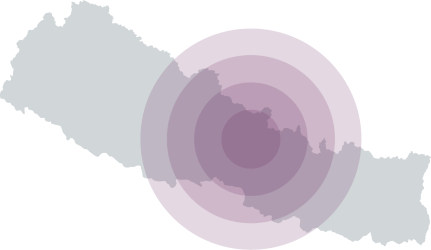HSP resources
The Humanitarian Standards Partnership (HSP) partners collaborate to provide the following resources.
The Humanitarian Standards Partnership (HSP) partners collaborate to provide the following resources.

The HSP learning management system (LMS) hosts self-paced online courses from various HSP partners. You can access the courses without registration. (You’ll need to create an account to print certificates or save your progress.)

If you’re not sure where to find the information you’re looking for, select a Mapped theme – for instance Environmental considerations, Inclusion, or Assessment – from the Navigation tool.

All HSP Handbooks are available for free via the Interactive Handbook in multiple languages. Select any book in any available language from the Bookshelf page.

The HSP brochure presents the work and partners of the HSP. It can be printed on a single sheet of A4 paper (double-sided).

The Standards vs. Targets activity supports an interactive activity for workshops or courses which can easily be adapted for in-person or online learning. The learning objective is that learners fully understand the difference between standards and targets.

HSP case studies present illustrations of how HSP standards are applied in practice. Developed from reports and interviews with humanitarian practitioners, they can be used for learning, training or raising awareness.

Download Sphere resources including training materials, unpacked guides, thematic sheets, annual reports and more.

Download ADCAP resources including the Good Practice guide, the ADCAP flyer, training resources and more.

On these CALP resources pages you will find a library of tools, reports and guidance related to cash and voucher assistance, including the Programme Quality Toolbox and the CALP Network Glossary.

A searchable database of resources from the CCCM Cluster.

A dynamic database of resources relevant to education in emergencies.

Download LEGS resources including Discussion Papers, Technical and Policy Briefs, and more.

MERS resources include a fact sheet, case studies, a training pack, COVID-19 guidance and a dashboard tool.

SEADS resources include case studies, an evidence database, learning briefs and webinar recordings.

Standards-based COVID-19 guidance in multiple languages and additional resources produced by the Sphere community.

Download Protection of Children during the Coronavirus Pandemic from The Alliance for Child Protection in Humanitarian Action. This technical note addresses pandemic-specific child protection needs and is available in 20 languages. An array of additional COVID-19 resources seek to equip Child Protection practitioners better so they can adapt their programming in the context of COVID-19 and other infectious disease outbreaks.

Download The use of cash assistance in the COVID-19 humanitarian response: accelerating trends and missed opportunities from the CALP Network. When COVID struck, governments and humanitarians turned to cash and voucher assistance (CVA) to help people. To what extent was CVA used, and how did it impact on ways of working?

A library of resources from the INEE to support the provision of education in places affected by COVID-19, organized by thematic topic.

Download the Guidance Note on applying LEGS in the context of the pandemic from LEGS.

The MERS Humanitarian and Development Community issued important and timely MERS guidance for COVID-19.
The Livestock Emergency Guidelines and Standards (LEGS) and Humanitarian inclusion standards for older people and people with disabilities (HIS) handbooks contain case studies within their chapters. Many HSP partners have video case studies on their YouTube channels (refer to the Social media section of this website). The following HSP partners provide pages or documents dedicated to case studies relevant to their standards.
The HSP case studies present illustrations of how HSP standards are applied in practice. Developed from reports and interviews with humanitarian practitioners, they can be used for learning, training or raising awareness.

Standards-based COVID-19 guidance in multiple languages and additional resources produced by the Sphere community.

This Child Protection Mainstreaming Case Studies Series (English, 2016) aims to strengthen the understanding of child protection mainstreaming. It employs good practices to illustrate steps taken, challenges encountered, and opportunities identified by involved stakeholders to ensure child protection considerations inform all aspects of humanitarian action.

The CCCM Cluster has collated several volumes of CCCM case studies which provide field practitioners with a collection of CCCM experiences, lessons and opportunities identified by involved stakeholders.

INEE case studies on the contextualisation of the INEE Minimum Standards demonstrate the applicability of the standards to a range of situations.

The MERS case studies allow you to reflect on responses and projects to see how the MERS could have been implemented for improved outcomes in market-based programming. The case studies are accompanied by exercise and assignment sheets for training purposes.

The SEADS case study database provides illustrative examples of the SEADS standards in practice.